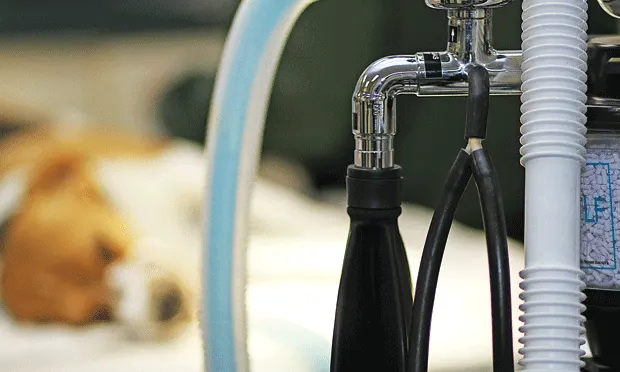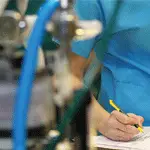Anesthesia Tips & Tricks for Veterinary Nurses

Veterinary technicians are tasked with a procedure—anesthesia—that is otherwise limited to human doctors, who become anesthesiologists often after obtaining their medical license and training. Veterinary technicians may learn anesthesia technique in a 2- or 4-year program or on the job. Most patients fare exceptionally well; even so, it is important to periodically review the basics.
1. Always perform a preanesthetic check

This includes checking oxygen sources, performing a leak test, and ensuring adequate amounts of inhalant anesthetic. Possible disasters include a low oxygen tank that expires, empty anesthetic, a hole in the rebreathing bag, and cracks in the nonrebreathing circuit (ie, “rocky” patients under anesthesia caused by unreliable concentrations of anesthetic gas).
2. Prepare all monitoring equipment before the procedure
Preparing monitoring equipment and attaching it to the patient before inducing anesthesia can reveal potential problems that could occur during induction. Patients can often experience hypotension or apnea initially, and these emergencies may be missed if equipment preparation is postponed until intubation and shaving.
3. Do not be afraid to preoxygenate
Preoxygenation before intubation helps increase the functional residual capacity (FRC) in the lungs. If the patient is emergent, severely ill, pediatric, or pregnant, oxygen deprivation or ventilation during intubation can be problematic. First filling the lungs with 100% oxygen helps ensure that high oxygen concentrations can diffuse in the pulmonary system and keep the patient oxygenated.
4. Remember what your monitors are and are not telling you

Using just a pulse oximeter is not enough to fully know blood pressure, perfusion, anesthetic depth, ventilation, temperature, or cardiac performance. Patients are stable if their blood pressure, hemoglobin level and saturation, cardiac performance, and ventilation are sufficient, but derangements can occur. A patient could have an arrhythmia but an acceptable oxygen saturation, or a drop in blood pressure but a perfectly normal heart rate and rhythm. One monitor is not enough. The American Animal Hospital Association, Academy of Veterinary Technician Anesthetists, and American College of Veterinary Anesthesiologists recommend measuring temperature, blood pressure, and pulse oximetry; performing an ECG; and looking at physical examination parameters such as eyeball position, MM/CRT, jaw tone, and auscultation.
Read the Preanesthetic Checklist and a Crash Course in ECG Monitoring.
5. Use the flow meter
If a patient’s anesthetic depth needs to be increased, should the inhalant concentration be turned up? Not exactly. The speed at which the patient receives the new concentration of inhalant depends on the flow meter. If the patient is breathing 2% isoflurane at 1 L/min but needs to be deeper, increase the isoflurane to 3% and the flow to 2 L/min or greater; the new anesthetic concentration will get there more quickly, as it has to travel through all the tubing. Once the desired plane is reached and the inhalant lowered, the flow rate should be reduced as well.
6. Use injectable anesthetic agents intraoperatively
This is common during a spay: a veterinarian pulls the ovary and broad ligament, the patient huffs and puffs, the inhalant is turned up, the patient settles down, and the inhalant is turned back down. The inhalant can take time to work; the technician can give additional analgesics intraoperatively to a patient that is huffing and puffing instead of using inhalant. IV anesthetics can also be used if a patient is so light that he or she is almost chewing the ET tube.
7. Keep patients warm
Remember, body temperature regulates almost every physiologic process, so an arrhythmia or blood pressure problem will not improve until the patient is warm. Use IV fluid warmers; booties made of socks, aluminum foil, or plastic wrap; circulating-water blankets; forced-air warmers; warmed saline for lavage; and towels to cover anesthetic circuits. Be careful with warming discs, electric blankets, or microwaved IV bottles that can cause thermal burns.